By Ed McDonough
Want a video clip of this drive? Send an email to pete@velocetoday.com.
A Chapron Delahaye
It seemed extraordinary to me doing the research for this series, reading a large number of period articles and reviews in notable journals, that many of these totally failed to mention who provided the body for some of the cars reviewed. Was it just a matter of routine that performance cars would have special bodies or could it have been that the reviewer didn’t know? After all, specialised car production was just that, and the history is complex.
Henri Chapron gets a few mentions in 1938, and when the Paris Salon V-12 car was sent to England in 1939, Figoni and Falaschi started to get some attention. But bodies for Delahayes had also been built, often to specific customer orders, by some intriguing people…a 1949 135M with a body built by Pennoch of the Netherlands to a design by Selborne of Mayfair, London. While Figoni and Falaschi may have executed some of the most ‘daring’ designs, bodies were also built by Saoutchik, Franay, Carrozzeria Motta, Carlton Carriage Company, Henri Labourdette, Letourneur et Marchand, and others.
These imaginative automotive sculptors often did for automobiles what the great couturiers did for fashion conscious women. Henri Chapron, however, had been on the scene for some time, and he was a creative and industrious man who managed to outlast some of his competitors, having formed a bond with Citroen. His ties with Delahaye went back to the pre-war period. Chapron had been born in 1886 and opened his atelier in the Levallois-Perret suburb of Paris in 1919. He created bodies for Talbot, Delage and Delahaye through the 1920s. He was known for buying existing cars or chassis which he liked and designing new bodies for them, continuing to do this in the 1960s when the Citroen DS appeared. Some of the Chapron-bodied cars were based entirely on his own ideas, others were commissions built to order, and in effect for a long period he was the Delahaye factory coach builder as he did the largest number of bodies.
Philippe Charboneaux, who was in charge of design at Delahaye, explained that Chapron was a stubborn sort, who never accepted anyone’s suggestions or ideas. “That is why his coachwork was never revolutionary, reflecting only his classical spirit.” He hated risks, was very sensible, and yet like Figoni, “he always produced finished work of consummate skill and perfection.” The example we drove recently is pure Chapron through and through.
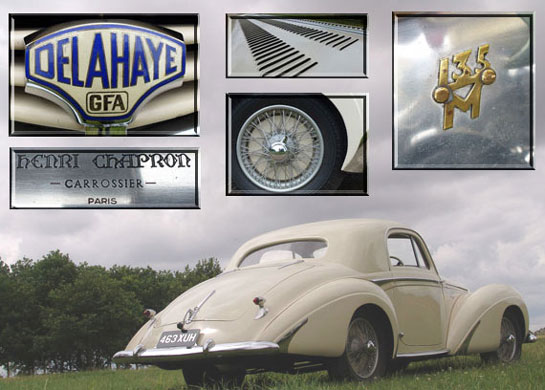
The GFA under the word Delahaye was applied to postwar models and stood for Groupe Francaise Automobile, a selling organization. The brass 135 M was found in the engine compartment. The overall lines are very conservative, the opposite of Figoni et Falaschi.
Chassis 800977
The lovely flowing ivory coupe you see here was a Chapron design, possessing some of his characteristic hallmarks in the general shape of the front and rear end of the car. The chassis is very much the 1938 pre-war design and this particular chassis would have been built in that year. In the period just before the war, three coupes of this design were built. Then Chapron revised the design of a new single color steel coupe in the immediate post-war years, the prototype being made expressly for the Paris Salon of 1948. The new dual chrome spears on the pontoon fenders would appear on all the Chapron models of that year. Very few of the cars had a single piece windshield though this car certainly does.
This was, of course, the period when styling was beginning to change, and there was pressure on Chapron and others to conform to the rather more ‘American’ styling, though indeed this particular body is only slightly different than its pre-war counterparts. The differences lie mostly in the location and nature of the belt or waistline, and the number, style and location of the various motifs and fender decorations. Delahaye was always characterised by elegance and occasionally extravagant ornaments. The chrome trim on this car is fairly conservative, the ‘spears’ located at the rear of the front fenders and at the front and rear of the rear fenders required intricate calculations and experiments to determine which layout provided the car with the greatest sense of speed and elegance. The trims were carefully located to blend in with other side trim to convey a feeling of continuous motion. While this sounds like designer pr-speak, take a photo of one of the undecorated bodies or saloon cars and place it alongside a photo of this car…the difference is not only immediately apparent, but it is immense. Chapron built solid, functional bodies with a functional appeal, but he was the master at making the car look exciting.
Delahaye archives show that the original owner was one Jorge Cuevas, the Marquis de Cuevas Bartholin. It then passed on to Monsieurs Vergnes, Ranos, Langlois and Pigeon, all French. There is some evidence that it resided in Germany for a period and then in the Netherlands, before coming into the present ownership under whose care it was restored.
Driving a grand sport coupe
It was a rather special occasion to drive this imposing machine. In the mid-1960s I had come across a similar car in black in a rather obscure auction in central Pennsylvania. I was impressed by the static presence of the car, and almost as much by the fact that it had a gear box with four forward and four reverse gears! However, some more practical sentiment forced me to pass and the car sold for $800. We all make mistakes.
So the Delahaye waited nearly 50 years to re-enter my life, not the same car of course, but one rather more refined, on which much attention had been lavished.
The interior makes you feel like you are sitting in the private library or office in a fine country house. The beige leather seats and carpeting lend an air of refinement. The first challenge is getting the car started, which is easy when you know how. The ignition is located partially under the scuttle on the right-hand side, between the handbrake and bonnet pull. A rather large key is inserted, choke pulled if necessary, and the starter button activated, and the potent six cylinder engine comes to life. The triple Solex carburettors burble away and it is time to commence a grand touring journey.
Delahayes were rather well known for innovation. The early cars offered a choice of full synchromesh gearbox or the Cotal electromagnetic box. This car has the latter and it is a masterpiece of design. Though the operation sounds complicated, in fact it isn’t. There is what appears to be a standard gearshift lever, floor-mounted to the left of the ornate steering wheel. This has three position: neutral, forward for the forward gears, and back for the reverse gears.
Then there is a tidy, rather art deco switch device mounted on the left side of the steering column. This is housed in a Bakelite casing and is in fact the gear change mechanism, a neat an effortless switch with 1st right and forward, back for 2nd, left and forward for 3rd, and back for 4th. The ease of gear changing is amazing and can be done with a flick of the finger, the hand not needing to leave the steering wheel. For reverse, the floor mounted lever is pulled back, and voila…you have a 4-speed reverse! However, for everyday use, 3rd gear is adequate for all reversing. This is most likely the smoothest manual gear-change any manufacturer has ever come up with.On the road, what appears to be a large car, feels smaller from behind the wheel. The handling is nimble, and there is very little roll and pitch, something of a surprise with a pre-war chassis. Delahaye had a very successful racing history, in large part due to the stiff and well built chassis, as well as the immensely reliable engine. I had expected vague, and it wasn’t. The Bendix cable-operated drum brakes are also more than up to the task, again belying the car’s age. The springing is generally very good though harsh bumps give a jolt, and I believe I might find this to be true of many of the Delahayes. The car is well behaved in town, or rather, village driving, and superb on the open road, offering a high degree of comfort. Rather late in the drive, I notice a very modern but tasteful and almost invisible sound unit had been tucked under the scuttle, so there is the possibility of a grand musical accompaniment to a grand drive!
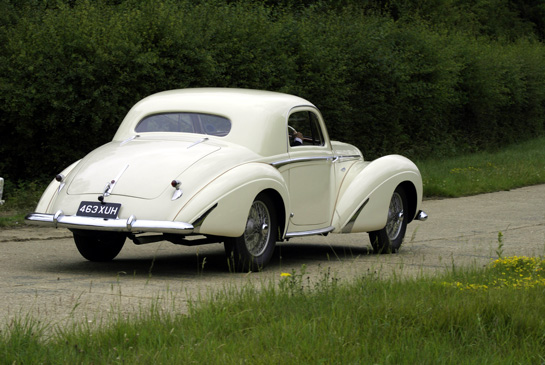
Effortlessly gliding down the road, Ed comes to the end of his Delahaye drive. But he'll be bringing more such drives and new video clips as well.
Anyone interested in more details of this car should contact Glyn Jones on
glyn@hallandhall.net
SourcesLes Grandes Routieres, Stobbs, Foulis, 1990
Automobile Quarterly, III-2
The Complete Encyclopedia of Motocars, Georgano, Dutton, 1972
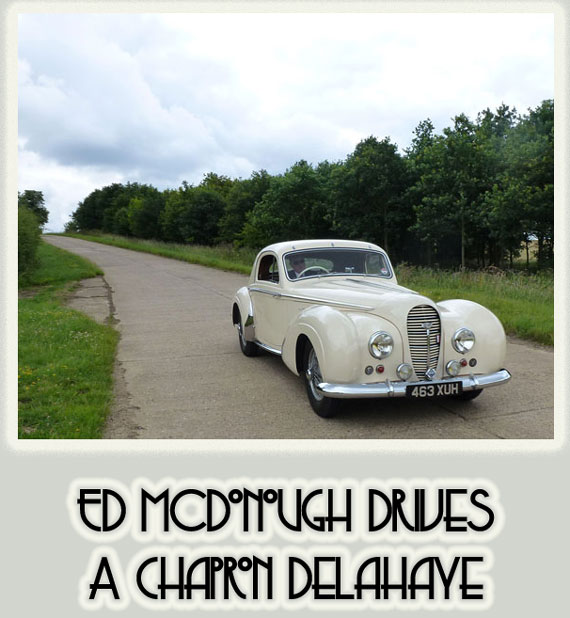
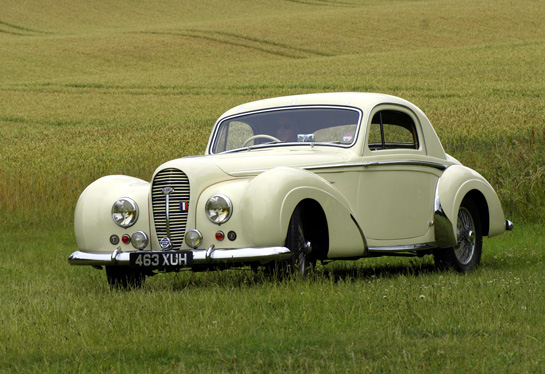
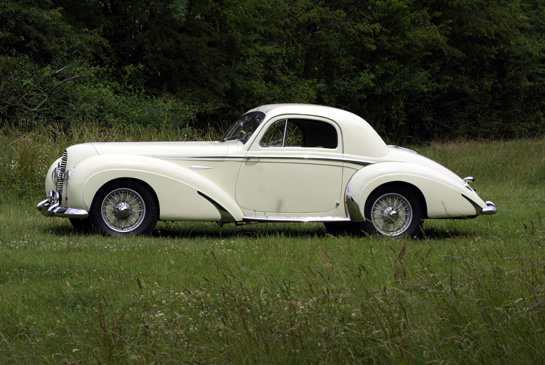
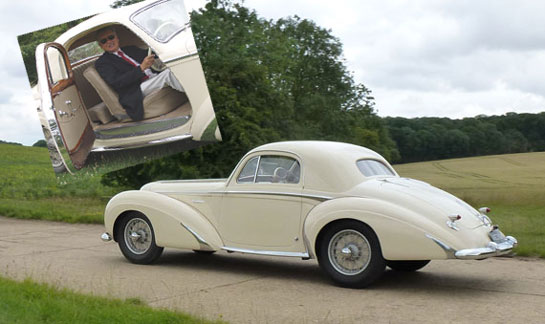
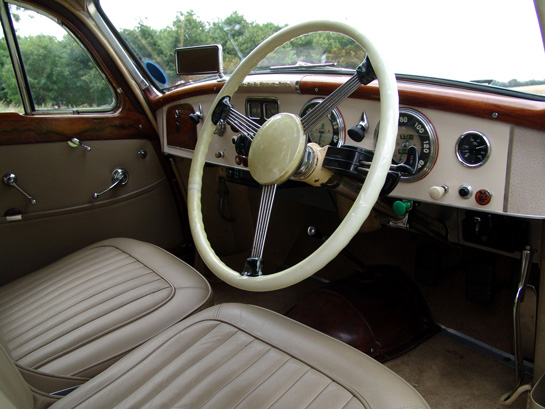
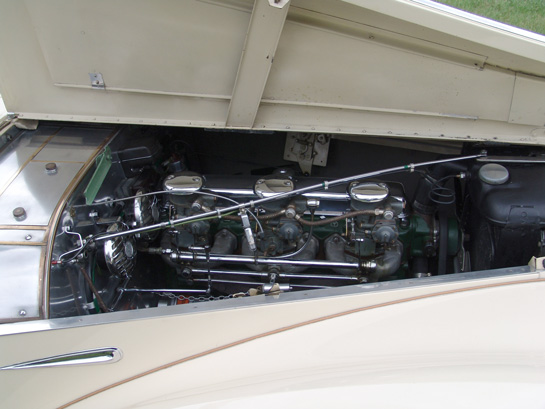
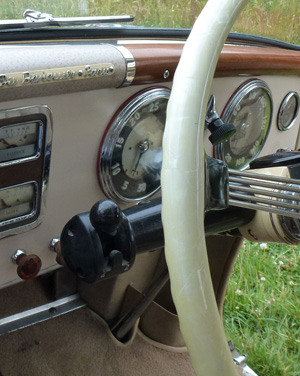
Thank you for a great read.
I believe however there are two typos you might care to correct in the last line of the second paragraph re the carrosssier’s names, they shoud read: Henri Labourdette, Letourneur et Marchand. Once again, great subject, great article!
Thanks, and your wish is our command!
Thank you for an interesting read Ed, I’ve always thought that Delahaye’s were among the most useable and desirable of pre-war cars. What a revelation the Cotal electromagnetic gearbox must have been in the thirties, especially after wrestling with the typical non – synchromesh gearboxes of the period.
I have never heard if the Cotal transmissions was reliable, or problematic, but your drive confirms that they certainly work effectively and would save most of us from those teeth grating moments when the double de-clutch into the lower gears of a “crash box” hasn’t been perfectly timed!
Meanwhile, my dream garage would include a Bugatti Type 57SC, complete with a Cotal electromagnetic gearbox, of course.
COULD THIS BE SAME COUPE OWNED BY BOB GEIER IN NYC AND ON COVER OF “MOTORSPORT”, THE AMERICAN MONTHLY IN 1952…?
THEN IN LAVENDER COLOR
JIM SITZ
OTREGON
Jim:
I don’t believe that this car ever left Europe, but as the owner has relatively little info on the 15+ Delahayes he owns, it is not to be completely ruled out.
Ed McDonough